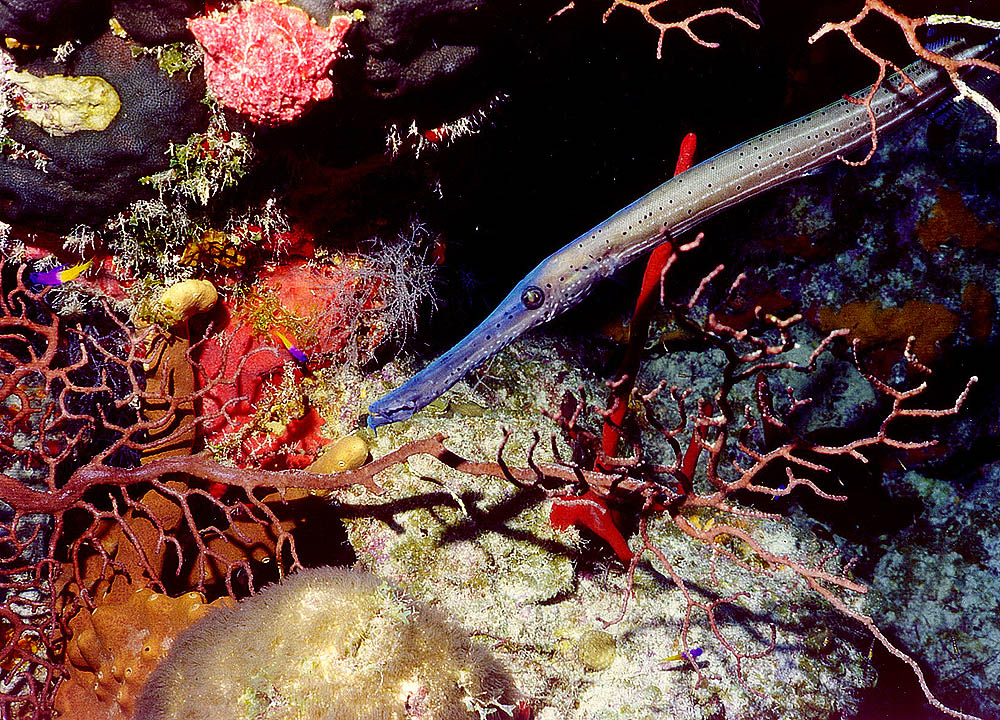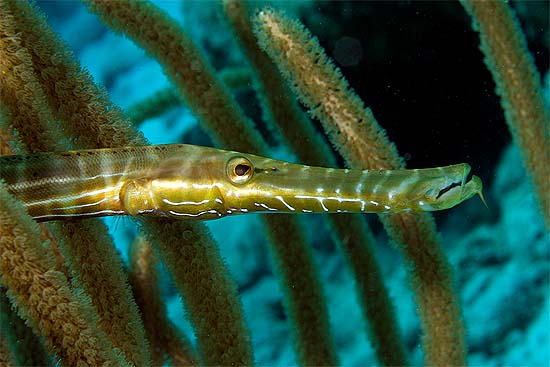Discover the Fascinating Facts about Trumpetfish: Masters of Camouflage and Stealthy Hunters
Trumpetfish are fascinating creatures that belong to the family Aulostomidae. Known for their elongated bodies and trumpet-like mouths, they possess unique characteristics that set them apart from other fish species. Here are some interesting facts about trumpetfish:
Appearance: Trumpetfish have long, slender bodies that can reach lengths of up to 100 centimeters (39 inches). They have a tubular snout that resembles a trumpet, hence their name. Their coloration varies depending on their habitat, allowing them to blend in with their surroundings.
Camouflage Masters: These fish are masters of camouflage. They can change their coloration and patterns to match their environment, making them nearly invisible to both predators and prey. This ability helps them ambush their prey more effectively.
Range and Distribution: Trumpetfish are found in tropical and subtropical waters across the world. They inhabit coral reefs, rocky areas, and seagrass beds, where they can find suitable hiding spots to stalk their prey.
Feeding Behavior: Trumpetfish are carnivorous and have a unique hunting technique. They rely on stealth and patience, slowly swimming near their prey before striking suddenly. They primarily feed on smaller fish and crustaceans, using their extendable mouths to engulf their unsuspecting prey.
Swimming Style: Despite their elongated bodies, trumpetfish are agile swimmers. They use their dorsal and anal fins to maneuver through the water with ease. When not actively swimming, they often hover motionless near coral reefs or other structures.
Solitary Nature: Trumpetfish are generally solitary creatures and prefer to live alone or in small groups. They are territorial and defend their chosen area against intruders.
Mating and Reproduction: During the mating season, trumpetfish form pairs or temporary aggregations. The male trumpetfish initiates courtship by changing coloration and displaying various body movements. After mating, the female produces adhesive eggs that attach to underwater structures for incubation.
Important Ecosystem Role: Trumpetfish play a vital role in maintaining the balance of coral reef ecosystems. As predators, they help control the population of smaller fish and crustaceans, which in turn promotes the health and stability of the reef community.
Threats and Conservation: Trumpetfish face various threats, including habitat destruction, overfishing, and pollution. While they are not currently listed as endangered, their population numbers may decline if their habitats continue to deteriorate.
Fascination for Divers: Trumpetfish are popular among scuba divers and underwater photographers due to their unique appearance and behavior. Their ability to blend into their surroundings often leads to captivating encounters.
In conclusion, trumpetfish are intriguing creatures with their elongated bodies, trumpet-like mouths, and remarkable camouflaging abilities. Their hunting techniques and ecological importance make them a fascinating species to study and observe in their natural habitats.
Hits: 2











